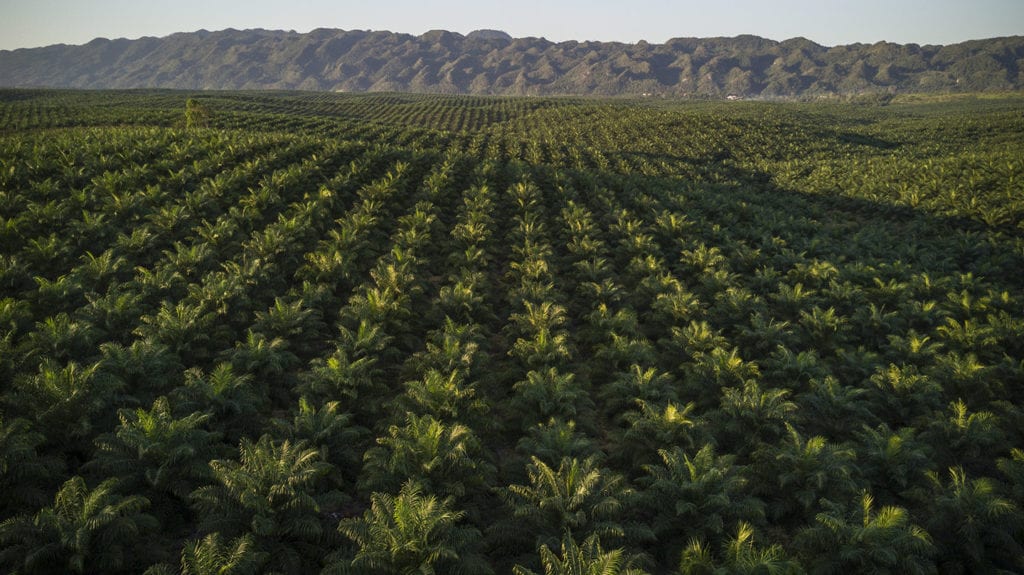Earlier this month, the Intergovernmental Panel on Climate Change (IPCC) released a new special report on climate change and land. While it didn’t generate the attention-grabbing headlines of last year’s report on the 1.5°C goal, its release came at a crucial moment in the climate fight, particularly for land use.
Last year the report on the 1.5°C goal made it clear that dramatic, immediate action in every sector of the economy was needed in order to have a chance of the world meeting the 1.5°C goal. That includes the land sector: emissions from agriculture need to drop to essentially zero, and deforestation destruction of grasslands must stop.
Additionally, the land sector is a major factor in the conversation about negative emissions. Governments have waited so long to act on climate that at least some removal from the atmosphere is needed. There are ways to enhance natural ecosystems to remove carbon, but many models rely on dangerous and unproven negative emissions technologies, such as bioenergy with carbon capture and storage (BECCS), which require large amounts of land.
The new IPCC report looks specifically at the land sector, what kind of impacts the land sector may experience from climate change, what mitigation and adaptation policies are available, and where there are trade-offs between approaches.
While not as splashy as last year’s report, this should serve as another reminder that climate change is already hurting us and that without immediate action across all sectors, the world will miss its chance to reach the 1.5°C goal. Food security is already being hurt by climate change, and without action things will get much worse.
But there are still pathways to meet our goals in a just and sustainable way – we just need to find the political will to follow them.
There are three big takeaways from the new IPCC report:
-
Land use is currently part of the problem, but if we are to meet the Paris Agreement goals and address the climate crisis, it must be part of the solution.
Right now, land use is a significant contributor to the climate crisis, particularly emissions from industrial agriculture and deforestation. However, the land sector is an essential part of a climate solution, with its potential to contribute to GHG removals. Restoring ecosystems, protecting forests (especially through protecting indigenous land rights), and changing to agroecological agricultural approaches are all essential to meeting the Paris Agreement goals. We talked about this in a report, Missing Pathways, which we wrote last year in coalition with key partners.
-
Industrial agriculture, and especially industrial meat production, is a major part of the problem: we need a just transition in agriculture.
Industrial agriculture requires huge monocrop plantations that rely heavily on chemicals and synthetic fertilizers. Synthetic fertilizers, especially with the overapplication that is common in industrialized agriculture, creates potent GHG emissions. Intensive and industrialized livestock production (such as CAFOs – concentrated animal feeding operations) is also a massive emissions source. Industrial agriculture cannot continue if we want a livable planet. Instead, agriculture needs to transition to be more just and sustainable if the world is going to feed everyone and keep our planet livable. ActionAid has been working to promote an agroecological approach, where farming works in concert with natural ecosystems and power sits with family farmers instead of corporations whose only incentive is to maximize profit at all costs. This is not only better for the planet, but also for farmers, farm workers, and consumers.
-
Large-scale bioenergy – including bioenergy with carbon capture and storage – is a major risk to food-security and land-rights. It’s not a climate solution and we don’t need it. Period.
Many climate pathways rely on large amounts of bioenergy, including BECCS. This report offers the clearest warning of any IPCC report so far about the significant risks, both to the environment and communities, implicit in large-scale bioenergy production. Large amounts of land for bioenergy means increased competition for food production, risk of increasing food prices and increased risk of land grabs. There are also serious trade-offs with other proven approaches to enhance ecosystems, such as restoration and halting deforestation. BECCS and large-scale bioenergy are dangerous distractions from the real climate action that’s needed in the land sector, as described in our latest policy brief.
Climate Action Now
It has been inspiring to see youth and students around the world rise and demand urgent climate action in the past few months. And yet climate change is not just a problem for future generations – it’s already hurting us now. And what climate action we take – or fail to take – today will have a profound impact on what options are available in the future. Wasting time on dangerous distractions, or simply ignoring the land sector, isn’t an option.
The world needs real climate action now, including in the land sector, if we’re to meet the goals of the Paris Agreement and avoid the worst impacts of climate change.

